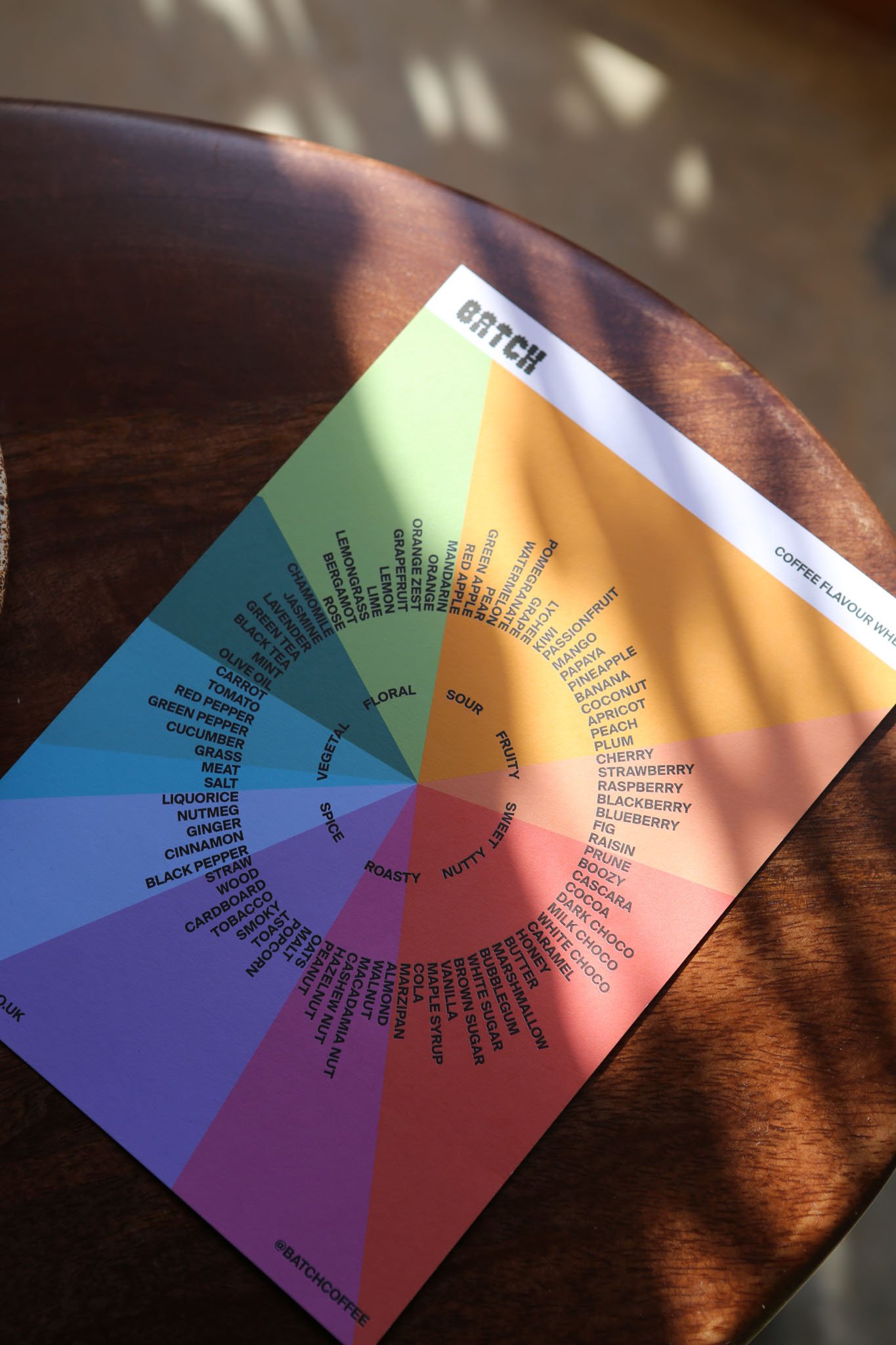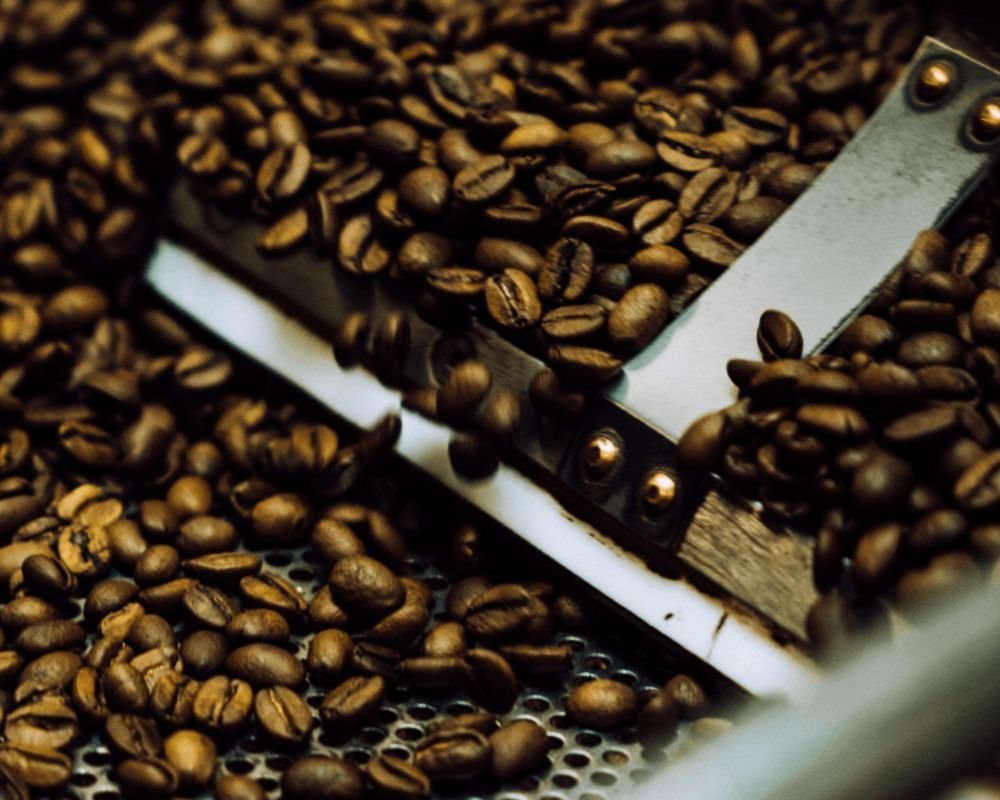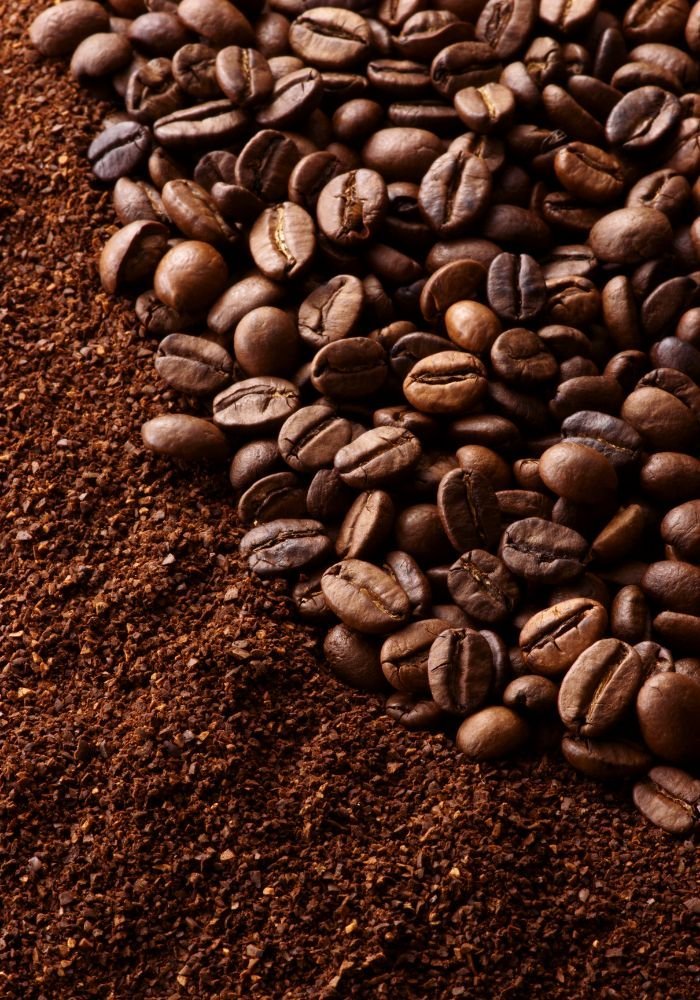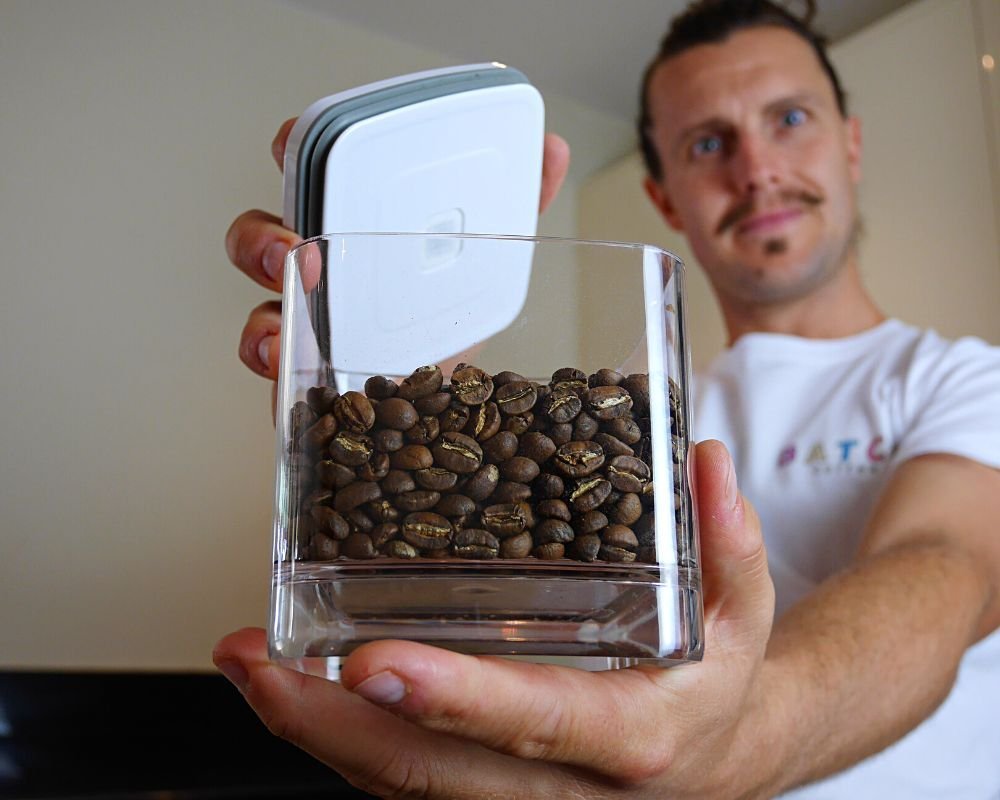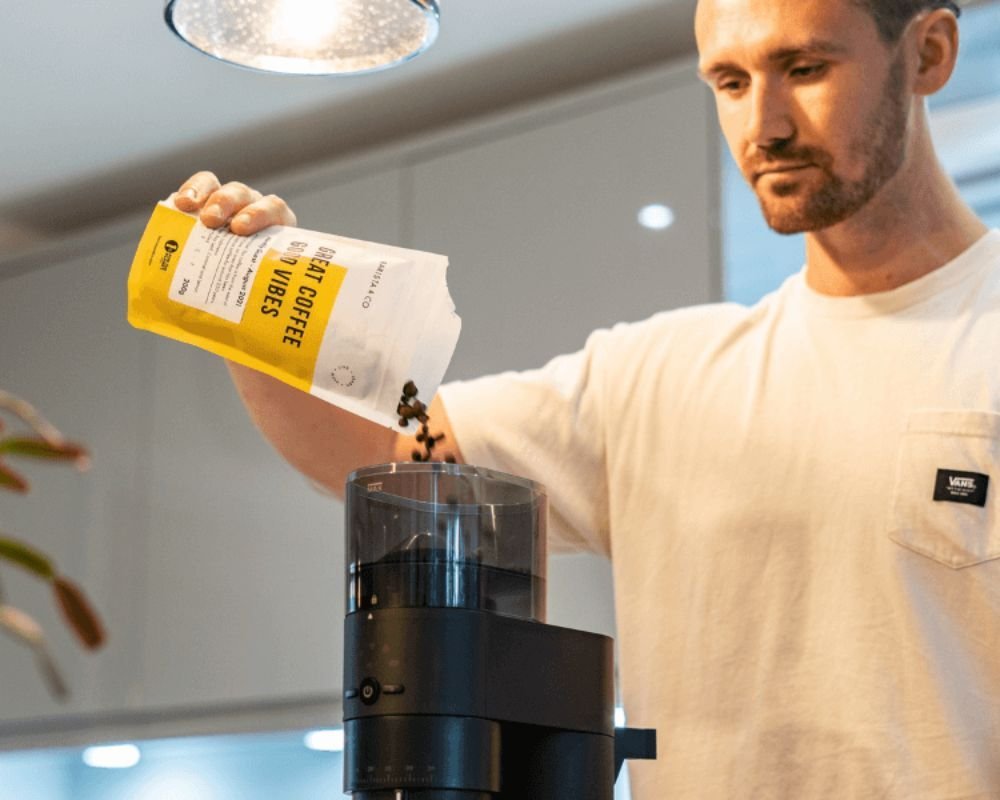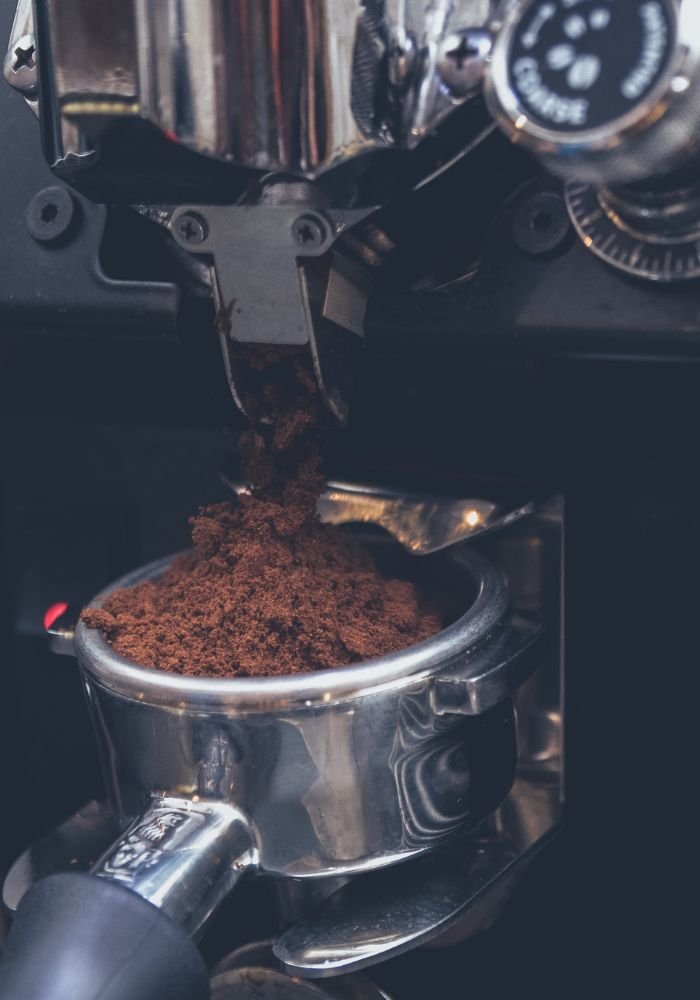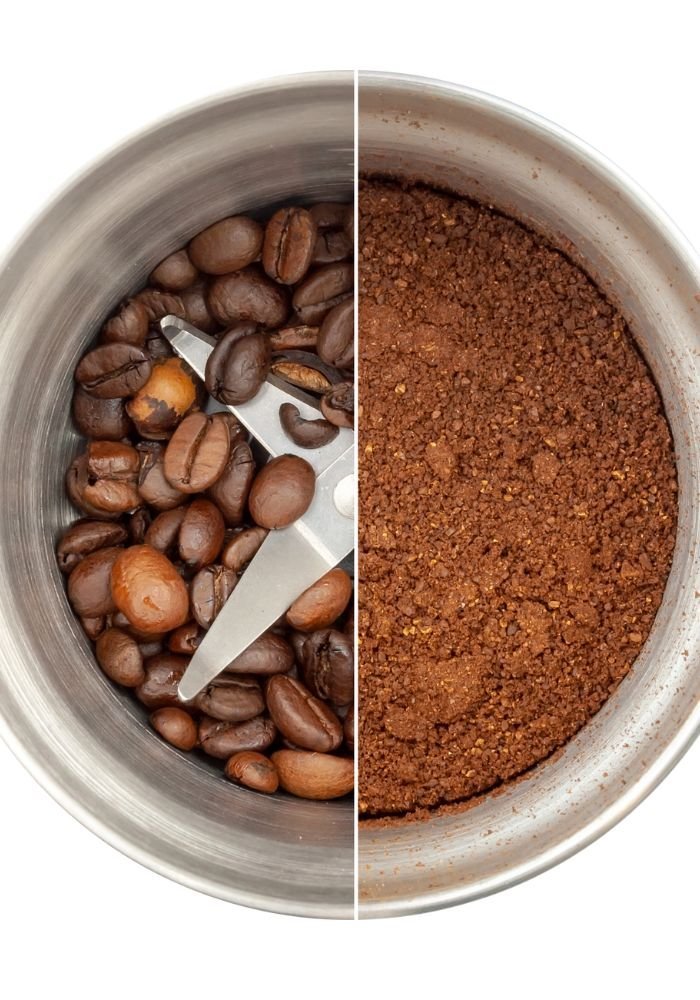Typically, there are two main types of electric coffee grinders, blade and burr.
Blade Grinders
Blade grinders, generally the most inexpensive option available, operate using a sharp blade to grind coffee beans. The blade spins rapidly in the device to slice the coffee beans into smaller and smaller pieces until they are at the desired grind size.
Blade grinders offer a straightforward, slimline, and low-cost device to deliver super fresh coffee at the press of a button.
The only downfall to blade grinders is that they are not always the most consistent on the market, meaning you cannot guarantee uniform grind size between batches. Also, due to the technology and location of the blade, the grinder can generate heat which can compromise the taste of the coffee beans if in contact.
Burr Grinders
The alternative to a blade grinder is a burr grinder. A burr grinder works by crushing the coffee beans against a static surface using a serrated grinder wheel mechanism. The size of the grind is determined by the position of the burr.
Burr grinders typically have more intricate grind settings and have the ability to dictate the exact size, allowing for more precision than blade grinders.
Unlike blade grinders, this type of grinder is more uncommonly found in grocery and kitchen stores. It also comes with a heftier price tag and greater electricity cost so more suited to those with a bigger budget.
What is the Best Coffee to use in Your Coffee Grinder?
Of course, with the luxury of a grinder, you’ll be looking to purchase good quality whole bean coffee to get the best out of your device.
When it comes to choosing the beans for you, it all comes down to preference. Often, if you prefer your coffee without milk and enjoy more delicate, sweet flavours, a lighter roast would be most suitable.
A darker roast coffee delivers a slightly more bitter flavour profile with stronger undertones – this type of coffee is best served with milk as the sweetness counteracts the harsh mouthfeel.
To ensure you have high quality beans, you want to be focusing on roasters that offer single origin, high grade, arabica coffee beans.
When to Grind Beans After Roasting?
Whilst you may think coffee beans are the best when ground as close to their roasting date as possible, you are mistaken.
Coffee beans are best when ground and brewed between ten to fourteen days after roasting. During the earlier days after roasting, the beans go through a degassing process whereby they release carbon dioxide gases.
This allows for the flavours to become more pronounced, offering much more clarity to your cup of coffee. Immediately after roasting, the taste can be perceived as high acidity and sourness due to the trapped carbon dioxide.
If you’ve read this far down, firstly a huger congratulations!
Secondly, we hope to have covered many reasons why freshly grinding whole bean coffee at home is the way forward.
It’s time to level up your coffee game with a grinder.
Join the Whole Bean Revolution!

